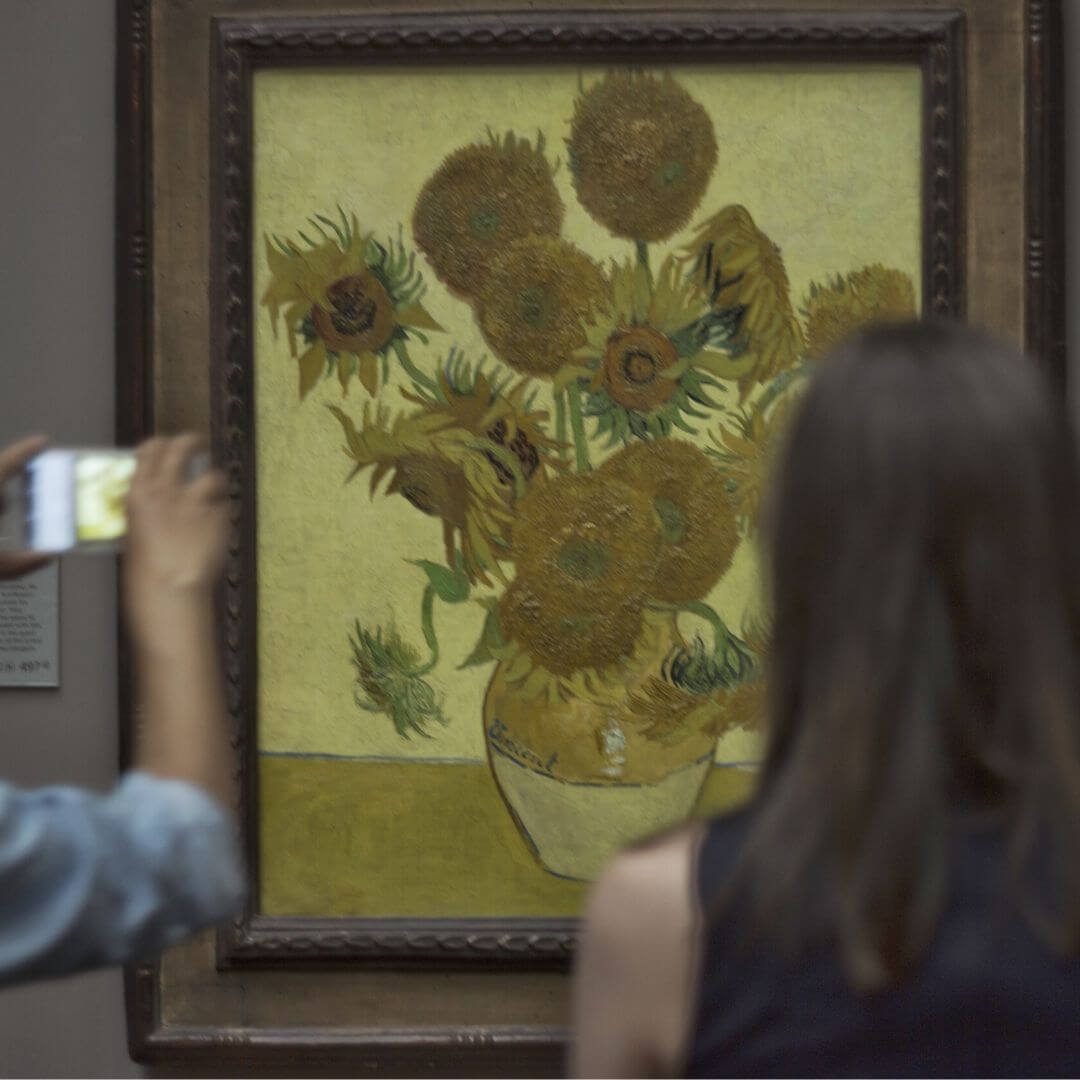
Lost Masterpieces Van Gogh’s Sunflowers
Van Gogh’s Sunflowers are among the most iconic works of all time, and the story behind these splendid masterpieces is unique and irreplaceable for each individual.
Symbolizing loyalty and devotion, the sunflowers represent a metaphor for Van Gogh’s states of mind, narrating the evolution of nature and human life itself. The artist depicted them in every stage of the flower’s development, which follows a defined life cycle and undergoes a transformation similar to the passage of time within a single day, always facing the sun from the earliest light of dawn as it gazes towards the east.
Van Gogh’s Sunflowers: The 7 Variations
There are 7 variations, with 4 painted in August 1888 while awaiting the arrival of his friend Paul Gauguin in Arles to furnish his own bedroom. It is believed that Van Gogh received the flowers as a gift from gardener Patience Escalier, the subject of one of his portraits. The initial idea was to create a portrait due to the poor weather of those early August days. However, when the model didn’t appear for the appointment, Van Gogh decided to focus on a still life instead. This turned out to be a brilliant idea, given the results.
Johanna Bonger Van Gogh
The fortune of this series is largely attributed to a female figure: Johanna Bonger Van Gogh, Theo’s wife and promoter of Vincent’s work, following the deaths of both her husband and the artist himself.
My favorite: The Vase with Fifteen Sunflowers, undoubtedly the most recognized by all of us, exhibited at the National Gallery in London.
Still Life: Vase with Five Sunflowers
But another version has also entered history, simply because it no longer exists! Still Life: Vase with Five Sunflowers belonged to Japanese entrepreneur Koyata Yamamoto until the Second World War. It’s believed to be the artist’s first known work in Japan. Unfortunately, it was destroyed on the same day as the Hiroshima bombings, as it was stored in the city of Ashiya, which was demolished by the attacks. Its memory remains thanks to a reproduction from the 1920s and a brief description taken from Van Gogh’s own letters.
Seven versions, all different. And what’s your favorite?



